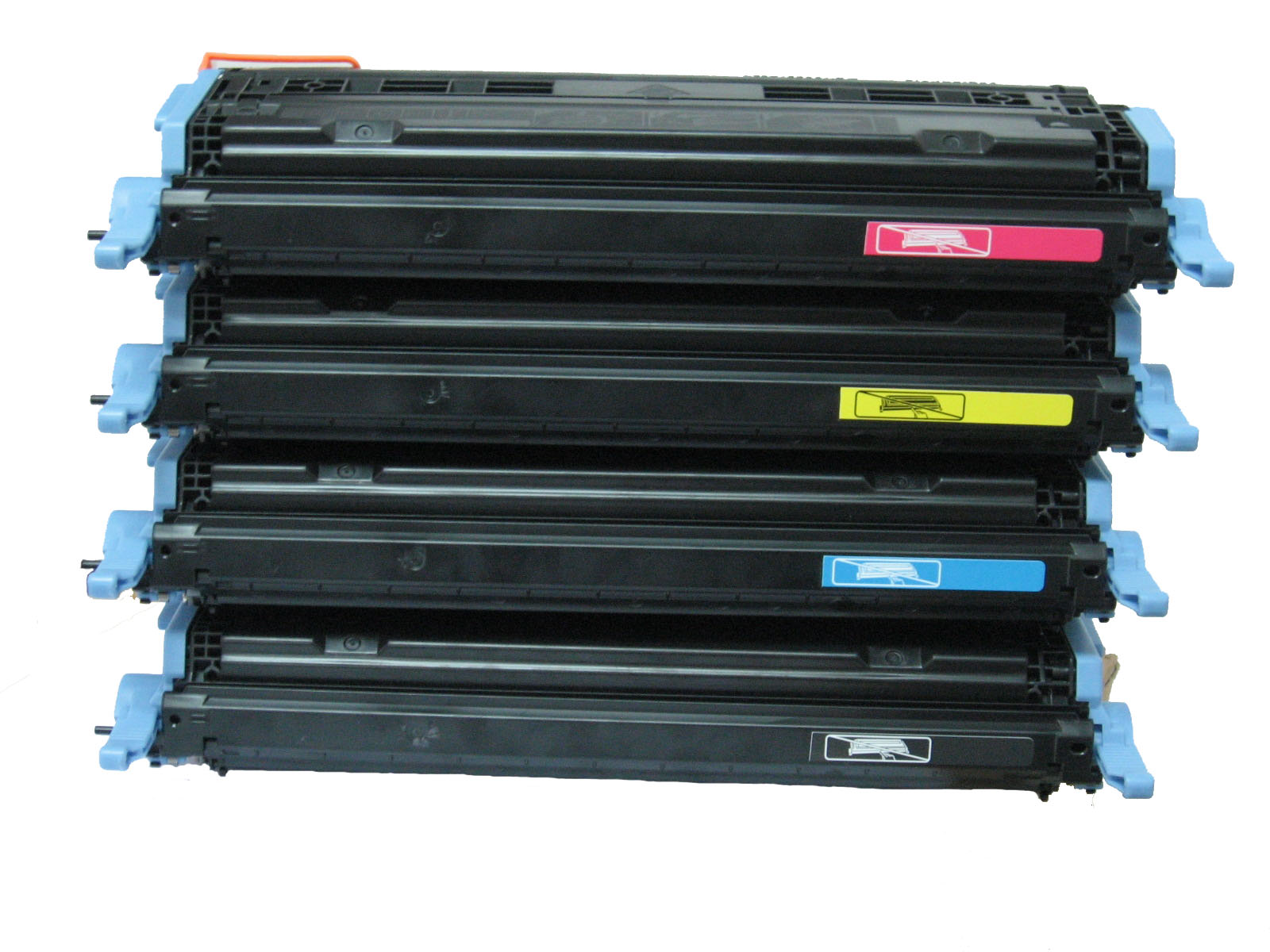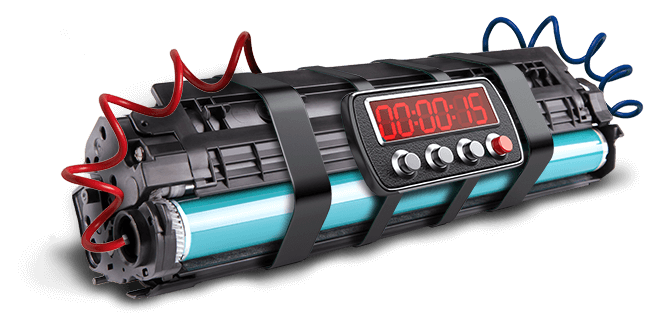Toner News Mobile › Forums › Toner News Main Forums › The Rise of (Fake) Chinese Clone Toner Cartridges is Putting HUGE Pressure on OEMs and Remanufacturers.
- This topic has 0 replies, 1 voice, and was last updated 4 years, 5 months ago by
news.
-
AuthorPosts
-
newsKeymasterThe Rise of (Fake) Chinese Clone Toner Cartridges is Putting HUGE Pressure on OEMs and Remanufacturers.
By Andy Braithwaite.
In early October, when HP Inc announced at its annual securities analyst meeting (SAM) that it was changing its imaging supplies strategy, it signalled a shift away from the ‘razor and blades’ business model – sell printers at a loss and make the profit on the supplies – that has existed in the print market for the best part of three decades (and which HP helped create).While the OEM continues to make good progress in subscription-based and contractual relationships with clients, it has had major concerns about how to profit from its massive global installed base of some 150 million devices and how it goes to market with new printers. “The model of driving mass adoption of hardware by selling printers at a loss has gone too far,” said Tuan Tran, the company’s new President of Imaging and Printing, at SAM.
The heart of the problem for HP is a loss of market share to aftermarket new-build compatible (NBC) cartridges that are increasingly available online. This is being most keenly felt in the EMEA region where HP’s supplies sales have been falling in the double digits. “[We have] created an attractive opportunity for others,” Tran suggested. “Alternative supplies competitors are growing without having to invest in hardware development, production or placement costs. They profited from online marketplaces that reduced their barriers to entry and caused customer confusion with HP original supplies.”
Now HP is hitting back in an effort to protect its aftermarket share. For its installed base, the OEM is preparing a major PR campaign based on the print quality, sustainability and the security benefits of its own brand supplies. It is also stepping up actions to protect its intellectual property (IP), saying that the biggest blight is alternative products being passed off as HP originals. So far this year, HP has taken down almost 50,000 online listings, and it says it will continue to work closely with its partner Canon to root out counterfeits.
As regards new printers, HP is adopting a dual approach to achieve what it calls a “rebalance of system profitability”. In a nutshell, this means no longer giving away printers which customers can run on cheaper aftermarket cartridges. It will offer consumers a choice: one, an HP ‘end-to-end’ solution that will provide a subsidised printer but which will lock the customer in to using only HP supplies; and two, for the customer to pay the full price for the printer, but to have flexibility when it comes to the choice of supplies.
Balance of power
HP says it expects to lose sales as it introduces this new model, but that actual profit dollars will increase. Nevertheless, its choice of strategy illustrates a key dynamic in the supplies channel, namely the shifting balance of power between the OEMs, remanufactured cartridge suppliers and the NBC manufacturers. The latter are mostly China-based firms, including powerhouses such as Ninestar, Print-Rite and Hubei Dinglong. One person who understands extremely well how these companies work is David Gibbons, Director at imaging supplies publishing and events company RT Media. Based in Zhuhai, China, Gibbons has been involved in the imaging channel for many years.He points to the distinction between what are termed ‘clone’ cartridges – exact replicas of OEM products – and other NBCs which have been developed using proprietary third-party IP that offer workaround solutions to OEM patents. “The term ‘clone’ tends to be used in a derogatory sense, but that can be appropriate when it is just a straight copycat of the original,” he says, adding: “We don’t support those, and we encourage everyone in the industry and the buyers to respect IP.”
Gibbons also notes a certain level of flexibility when it comes to what kind of products Chinese manufacturers will produce depending on the market they are destined for. “In markets where the OEMs are vigorously defending their IP, these manufacturers will absolutely respect these patent rights and only offer products that have their own IP content,” he states. “However, they will make ‘clone’ products for those markets where patents are not registered, simply because there is a market for them.”
This can give rise to counterfeit product issues, most notably in the Middle East and Africa where clone cartridges are passed off as OEM originals, something that Gibbons believes is “a huge concern”. He contends, though, that this is not necessarily the fault of the manufacturer.
“The company that made these products may not have intended for them to be used this way and was simply fulfilling an order for ‘white-box’ cartridges,” he notes. “But the items are then repackaged with a fake OEM label and box and sold as a genuine OEM article.”
Quality improvements
One criticism that is often levelled at NBCs is that they are inferior in quality to OEM and remanufactured products and are prone to malfunctioning or even damaging print hardware. While this may have been true in the past, and there are undoubtedly very low-cost products of dubious quality circulating in the market, the ability of these large China-based manufacturers to deliver on the quality aspect should not be underestimated.This was evidenced recently at October’s RemaxWorld Expo event in Zhuhai where US-based distributor LD Products – which sources NBCs in China – won the 2019 Quality Leader award for its Gold Line series. This was the first time in the event’s 12-year history that an NBC product had won this accolade over a remanufactured product. “Winning this award sends a clear message to dealers that they now have a proven quality alternative to OEM and remanufactured products,” said Christian Pepper, President of LD Products’ Channel Partner Division.
This win for LD came shortly after it received positive results from third-party testing organisation Buyers’ Lab (BLI) for the Gold Line series. It was the first time new-build or extended yield cartridges had successfully completed BLI’s testing procedures.
Harmful substances
That said, studies have also shown that cheaper aftermarket products can contain harmful or banned substances. Last year, excessive levels of decabromodiphenyl ether (decaBDE), a flame retardant that has been prohibited in the EU since 2008, were found in some HP compatible products.Tests later carried out by the European Toner and Inkjet Remanufacturers Association confirmed high levels of decaBDE in products that it had tested, and OEMs have been quick to publish findings from their own research. For example, Xerox’s Analytical Services Department tested a widely available aftermarket toner for its Phaser 6510 printer and said it was “shocked” to discover levels of volatile organic compound styrene of 650 parts per million (ppm) versus the Xerox genuine product’s 4 ppm and the company’s own guidelines of under 25 ppm.
The NBC manufacturers have been quick to react. Print-Rite, for one, has issued statements and documentation confirming that its Pelikan-branded products are decaBDE free after going through both internal inspections and third-
party testing.
In addition, there are lingering IP uncertainties involving NBCs. Canon and Epson have been leading the way for the OEMs with a string of lawsuits, while Brother recently upped its efforts in the battle against patent-infringing products when it filed a complaint against 32 companies.So where does the rise of the NBC suppliers leave the remanufacturers? The recent demise of US vendor LMI Solutions and the news in August that the sector’s market leader Clover was experiencing financial issues certainly point to a challenging state of affairs.
Says Gibbons: “Clover’s business model is based on a very expensive collections programme it is locked into. It cannot produce an aftermarket cartridge as cheaply as a quality NBC manufacturer that doesn’t have the overheads of collections and everything else that goes with that.”
Indeed, remanufacturers have been able to compete on price versus the OEMs, but not against the growing NBC presence. Nevertheless, the remanufacturers clearly take the higher ground when it comes to environmental and sustainability issues. As public awareness of single-use plastics grows and the need for an end-of-life supplies solution for managed print contracts becomes more commonplace, the NBC makers cannot – or do not want to – compete.
Remanufacturers have other trump cards to play as well. The fact that their products are derived from OEM original cores preclude them from issues related to IP infringement and harmful plastics. They can be regarded as a reliable, safe and compliant choice that is promoting the circular economy and preventing empties from ending up in landfill.
A different conversation
What weight all those arguments carry is largely down to consumers and whether price is the determining factor for them. Yet there are signs even the NBC makers are aware that fighting on price alone isn’t necessarily the right path to take.In Europe, Print-Rite now owns the respected Pelikan aftermarket brand and the company brought in well-known imaging executive Steve Weedon earlier this year to run its European operations. On the face of it, it’s a similar brand strategy to Ninestar’s 2016 acquisition of Lexmark and, in the PC sector, to Lenovo buying IBM’s computer hardware business back in 2005. In both cases, it gave the China-based parent company a foothold in a credible, higher-margin branded business and moved away from a race to the bottom on price. The discussion on brand value is certainly one that Weedon wants to have with resellers and it will be interesting to see how this kind of strategy develops.
Firmware strategies spark reaction
For Tricia Judge, Executive Director at the International Imaging Technology Council (Int’l ITC), the recent change in HP Inc’s firmware strategy has not gone unnoticed. She called the OEM’s introduction of firmware that prevents a printer from operating with a non-original cartridge a “timebomb”.The development spurred her organisation – in cooperation with the UK Cartridge Remanufacturing Association – to file a complaint with the Green Electronics Council challenging claims by HP that its printer products meet certain criteria as defined by the Electronic Product Environmental Assessment Tool (EPEAT).
The EPEAT criteria were developed over a two-year period by a group of stakeholders comprising government officials, OEM manufacturers – including HP – and members of the aftermarket community. They include standards which state that all imaging equipment will “allow the use of non-manufacturer cartridges and non-manufacturer containers”. Judge says HP’s new firmware is “outrageous” and “clearly contrary” to EPEAT.
Nevertheless, it would appear unlikely that HP will be able to implement its firmware or prevent the use of remanufactured aftermarket cartridges in the US. The 2017 landmark ruling in the Impression Products versus Lexmark case means that OEM cores and cartridges can be collected from anywhere in the world, remanufactured and sold in the US.
Not all OEMs are taking a hard line. A recent move by Brother allows for the microchips on its newer cartridge models to be reset and therefore reused. This is something that has been welcomed by ETIRA, the European Toner and Inkjet Remanufacturers Association.
ETIRA says Brother’s strategy represents “a key milestone” in the fight against single-use cartridges and is “a major step forward” in encouraging reuse and remanufacturing versus other end-of-life solutions such as recycling, landfill or incineration.
“Chips can enhance cartridge functionality but must never hinder cartridge reuse,” notes ETIRA, which is calling on other OEMs to follow Brother’s example.
https://www.opi.net/magazines/archive/2019/november-2019/top-picks-november-2019/hot-topic-the-struggle-for-supplies/
-
AuthorOctober 31, 2019 at 4:34 PM
- You must be logged in to reply to this topic.


